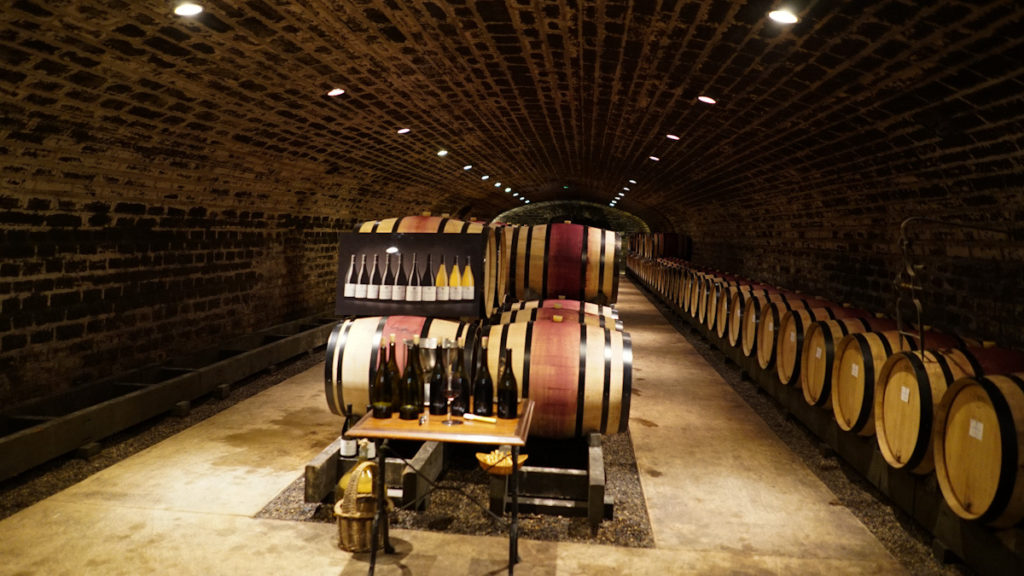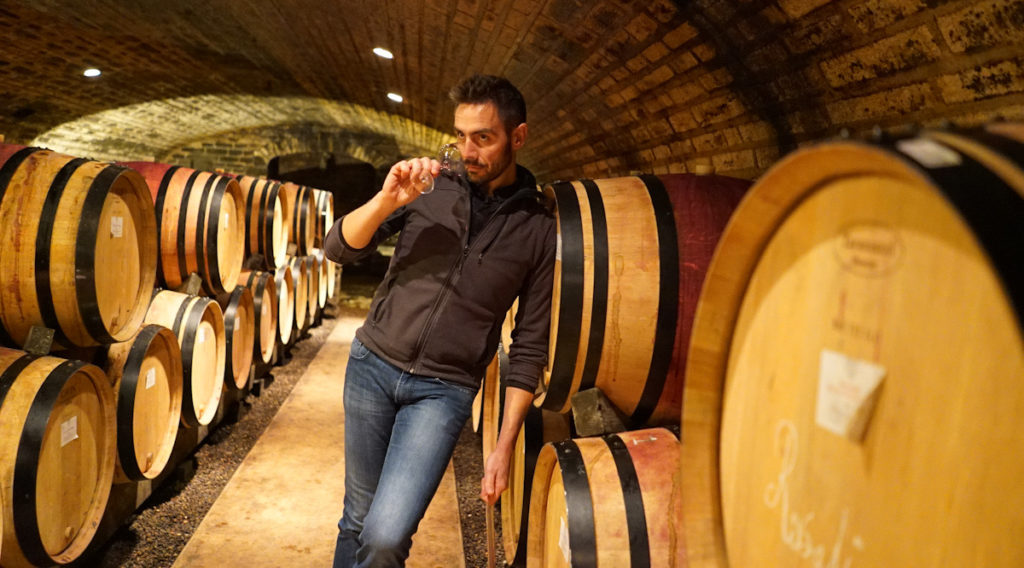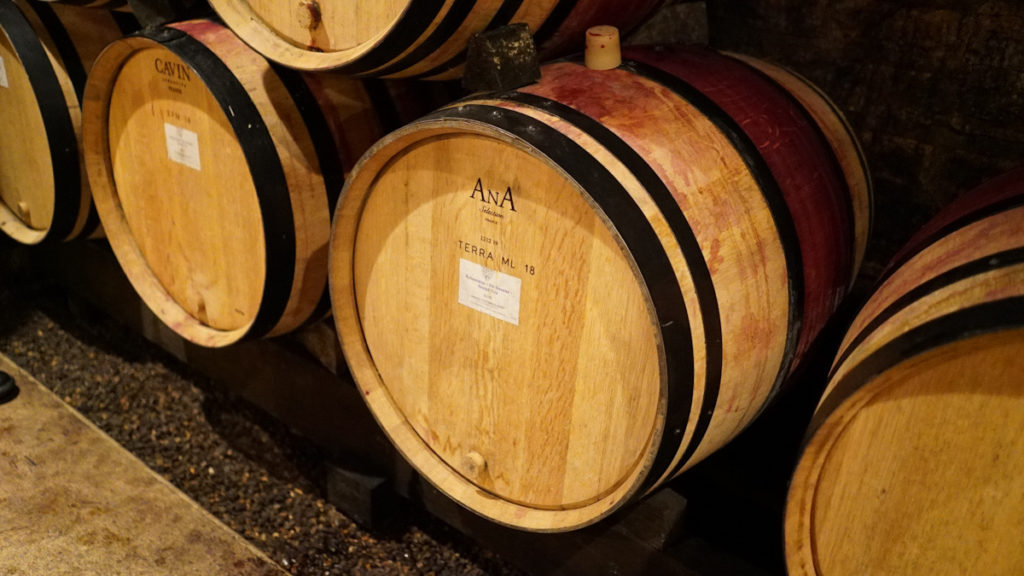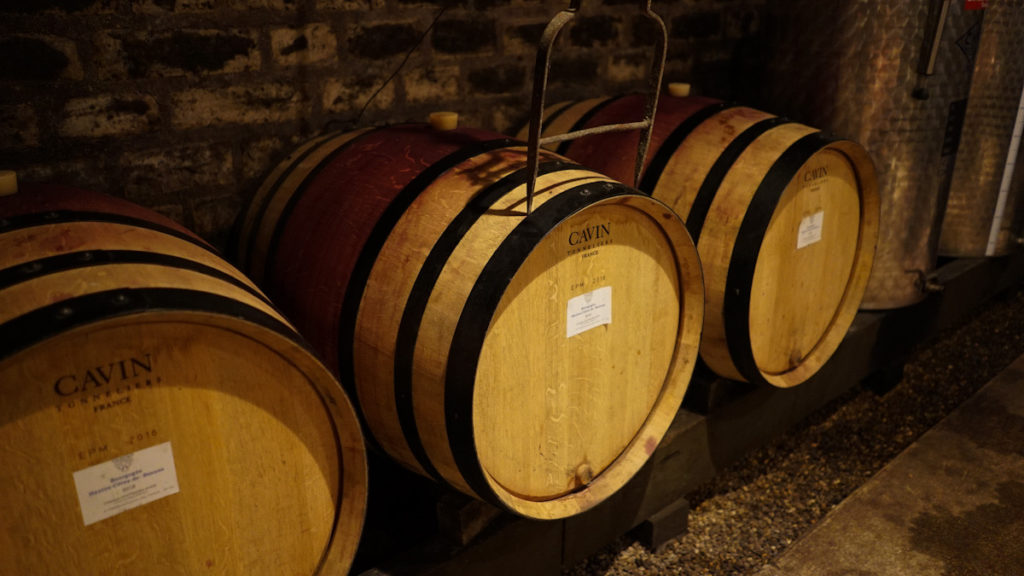I have followed Domaine Jayer-Gilles for many years (I think 1992 was the first vintage I tasted) and these wines always left a strong impression – of oak: a lot of new, toasty oak, with quite a bit of sulphur added to the cocktail.

Strangely, however, I was nonetheless fascinated drinking these wines, extreme as they were. Despite the production choices, the inherent quality of the vineyards, the grapes, and the vinification seemed nonetheless to lurk beneath, and these rather individual wines showed lively, vivid fruit underneath the oak.
The basic good qualities definitely were there even before it became Domaine Hoffmann-Jayer in 2017.
In memory of Gilles – Gilles Jayer
The Hoffmann-Jayer estate was founded in the 1950s by Robert Jayer and his wife Paulette. It is located in the old Gilles buildings in the village of Magny-lès-Villers, in the hills just southwest of Nuits-Saint-Georges. It should be noted that Robert Jayer originated from the Jayer family in Vosne-Romanée.
The couple had a son – Gilles Jayer – born in 1961, who began working at the family estate in 1991 and who took over from his parents in 1998.
I have followed the wines of Jayer-Gilles since 1992, and while the style was quite singular, I found demand for them decreasing over the years, although I actually liked the somewhat special style.
In 2017, Gilles decided to sell the estate to André Hoffmann, as he had no descendants who wished or could to take it over.
André Hoffmann is a Swiss national with a background in the medical industry. He is furthermore an avid wine enthusiast, and he is now running the domaine with some good people.

Gilles Jayer sadly passed away in 2018, and the young winemaker Alexandre Vernet took over the estate’s production reins.
Jayer-Gilles before; Hoffmann-Jayer in the future
The domaine is in the process of converting from the robust style of Gilles Jayer to a more modern and balanced approach, leaving behind the old, toasty oak regime.
2017 was made in the old style, with 100% new oak in all cuvees except the Aligote and the Passetoutgrain, both of which were vinified and matured in stainless steel.
From 2018, however, it has begun limiting the oak impression and reducing its use, especially in the lesser cuvées starting with the 2019 vintage.
So these are years of change. But the quality of the vineyards and the grapes harvested is fundamentally sound, and the new style is definitely interesting compared to the old, robust style of Gilles Jayer.

The 2018s – the topic of this article – are showing fine progress, but there are still some similarities to old regime. The promise here is very fine … and the 2019s are waiting in the cellar.
But let’s go to the 2018s!
Tasting the 2018s from cask
Tasting at an estate unknown to me is always a challenge. And when we have a stylistic transition occurring at the same time, things move from challenging to … very complex. That being said, the wines made here are good, but clearly Alexandre Vernet is working on a longer-term adjustment.
One thing I noticed tasting here is the significant change in terroir expression when going from the Hautes Côtes de Beaune to the Hautes Côtes de Nuits. There is a marked difference. When tasting the cuvees in a line-up, the change in terroir perception happens just south of Magny-lès-Villers.
This is definitely an interesting area, with Côtes de Nuits Villlages also contributing.
Domaine Hoffmann-Jayer Hautes Côtes de Beaune Blanc 2018
A blend of 30% Pinot Blanc and 70% Chardonnay, this is given 12 months in barrel and seven months in stainless. It’s from quite old vines – 45 years – located in the area near Magny-lès-Villers in the climat Les Vallerots. The oak regime is under revision, but as far as I recall was reduced to 50%-60% new versus 100% in 2017. The nose is tight and quite focused with a nice nutty note and a hint of honey and beeswax. It’s fairly discreet for a 2018, with a relatively cool feel.
(Drink from 2022) – Good – (87p) – Tasted 09/03/2020

Domaine Hoffmann-Jayer Hautes Côtes de Nuits Blanc 2018
The Bourgogne Hautes Côtes de Nuits is made from grapes from Magny-lès-Villers (lieu-dit Le Perchy) and Villers-la-Faye (Sous le Mont and La Flie). It shows white fruit and is more deeply focused, with some exotic fruits also present. This is more expressive and a bigger wine, but better? I’m not so sure. Five thousand bottles were made in this large cuvée. The oak regime was the same as the previous wine: 50%-60% new casks, with the rest being one wine old.
(Drink from 2022) – Good – (87p) – Tasted 09/03/2020
Domaine Hoffmann-Jayer Hautes Côtes de Beaune 2018
Pinot noir for the Bourgogne Hautes Côtes de Beaune is grown in two plots: En Foigery and Les Castaings in Magny-lès-Villers. This is focused and rather cool for a 2018, and quite crisp based on its limestone minerality. Rich and subtle, it does work well in 2018. As to the oak, 60%-70% new is still quite a lot, but a further adjustment was made in 2019, to a third new oak, a third one wine old, and a third in amphorae.
(Drink from 2026) – Good – (87p) – Tasted 09/03/2020
You need to login as a Premium subscriber to read the rest of this article. If you are not a Premium Subscriber, use the subscribe function and sign-up.

 - A true vin d’émotion – a Burgundy of passion
- A true vin d’émotion – a Burgundy of passion - A truly hedonistic wine – lively and enjoyable
- A truly hedonistic wine – lively and enjoyable - A vivacious wine for pure indulgance
- A vivacious wine for pure indulgance - A Vin Vif - fresh, energetic and with a light appearance
- A Vin Vif - fresh, energetic and with a light appearance
What happened to the N-S-G ” Les Damodes ” ?
Did they sell the vineyard ?
Hi Ronald,
They still have the vineyard … but it was not tasted in March. I have retasted the wines all bottled in July … and its showing fine .. still somewhat of the old style.